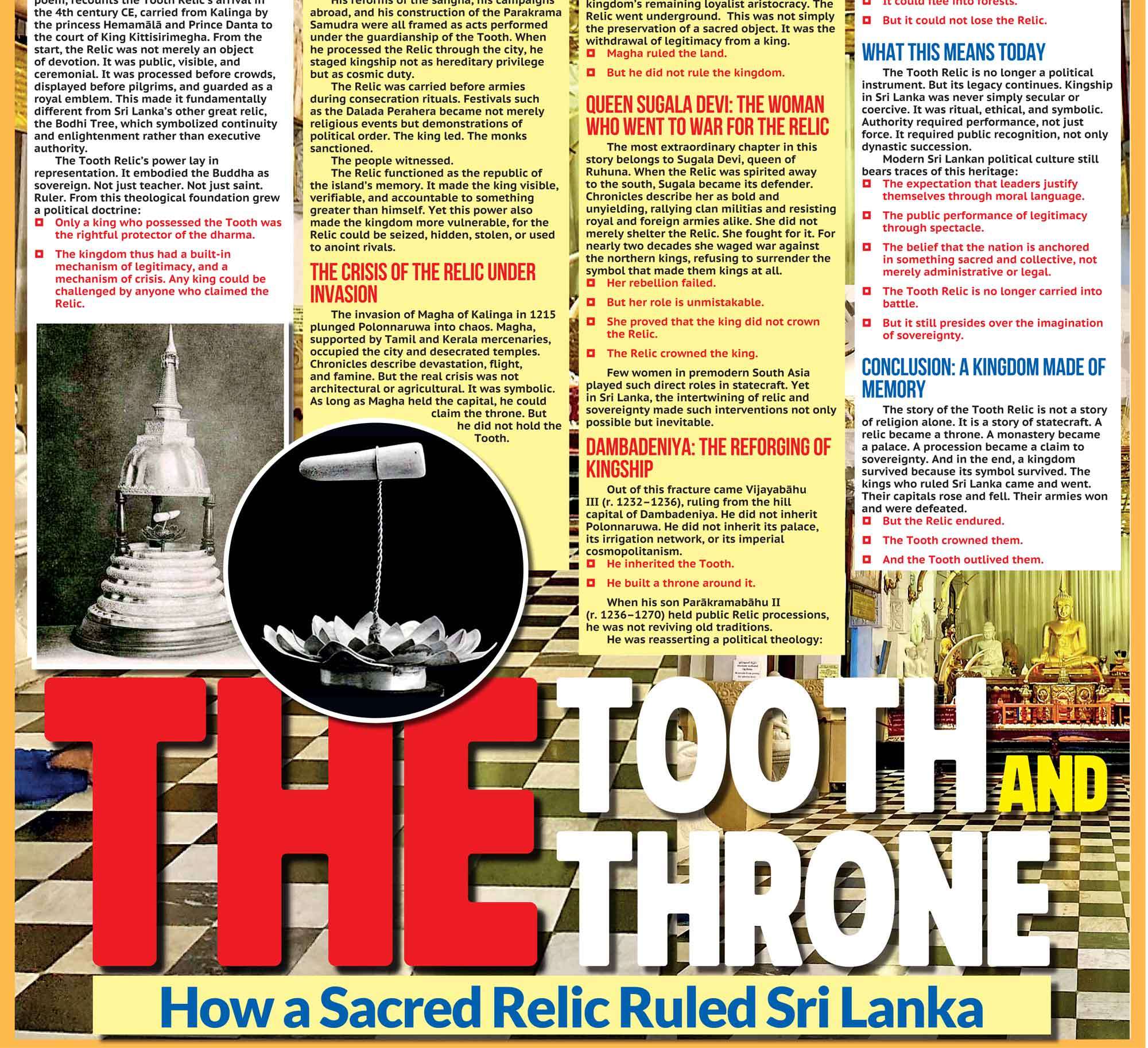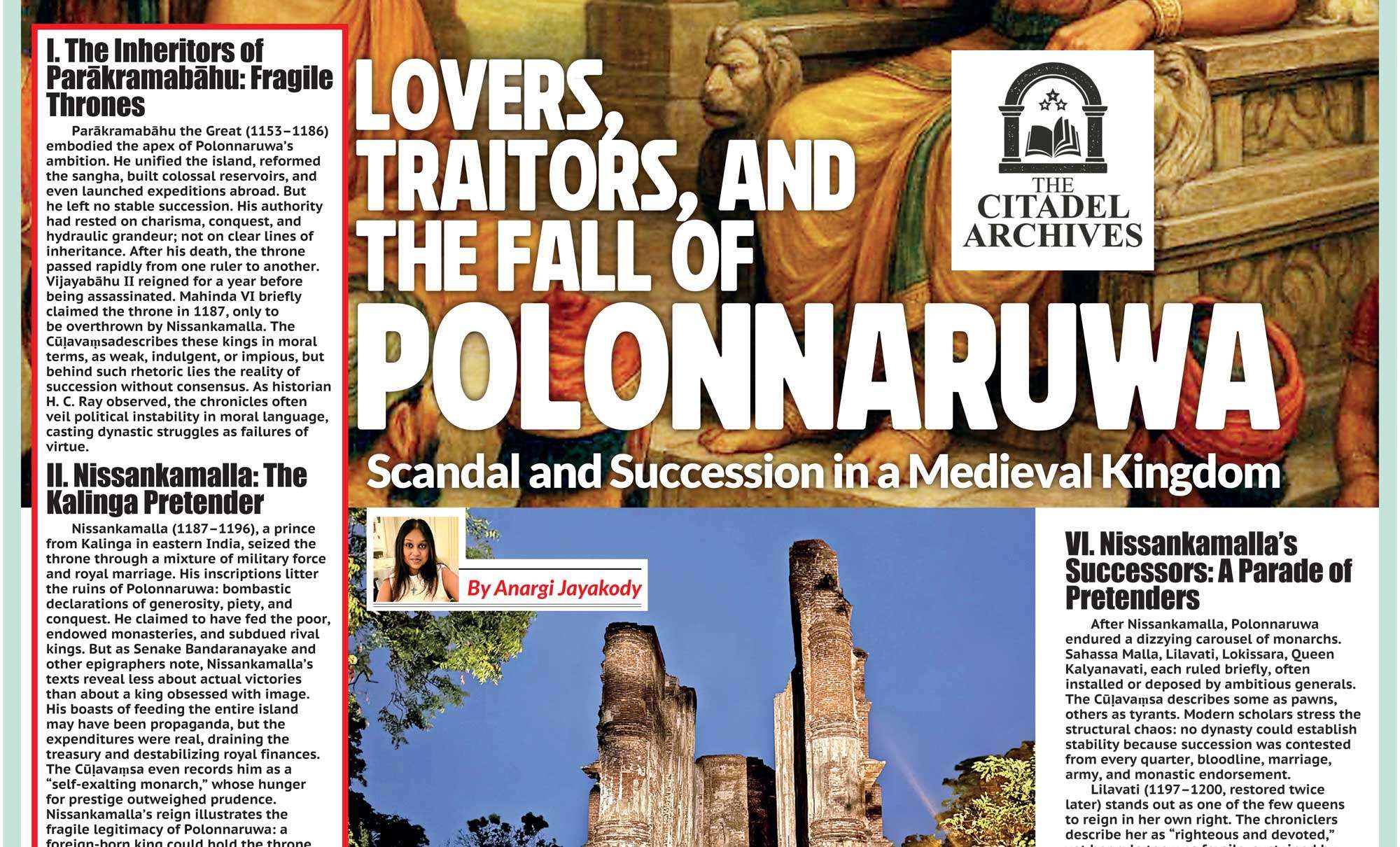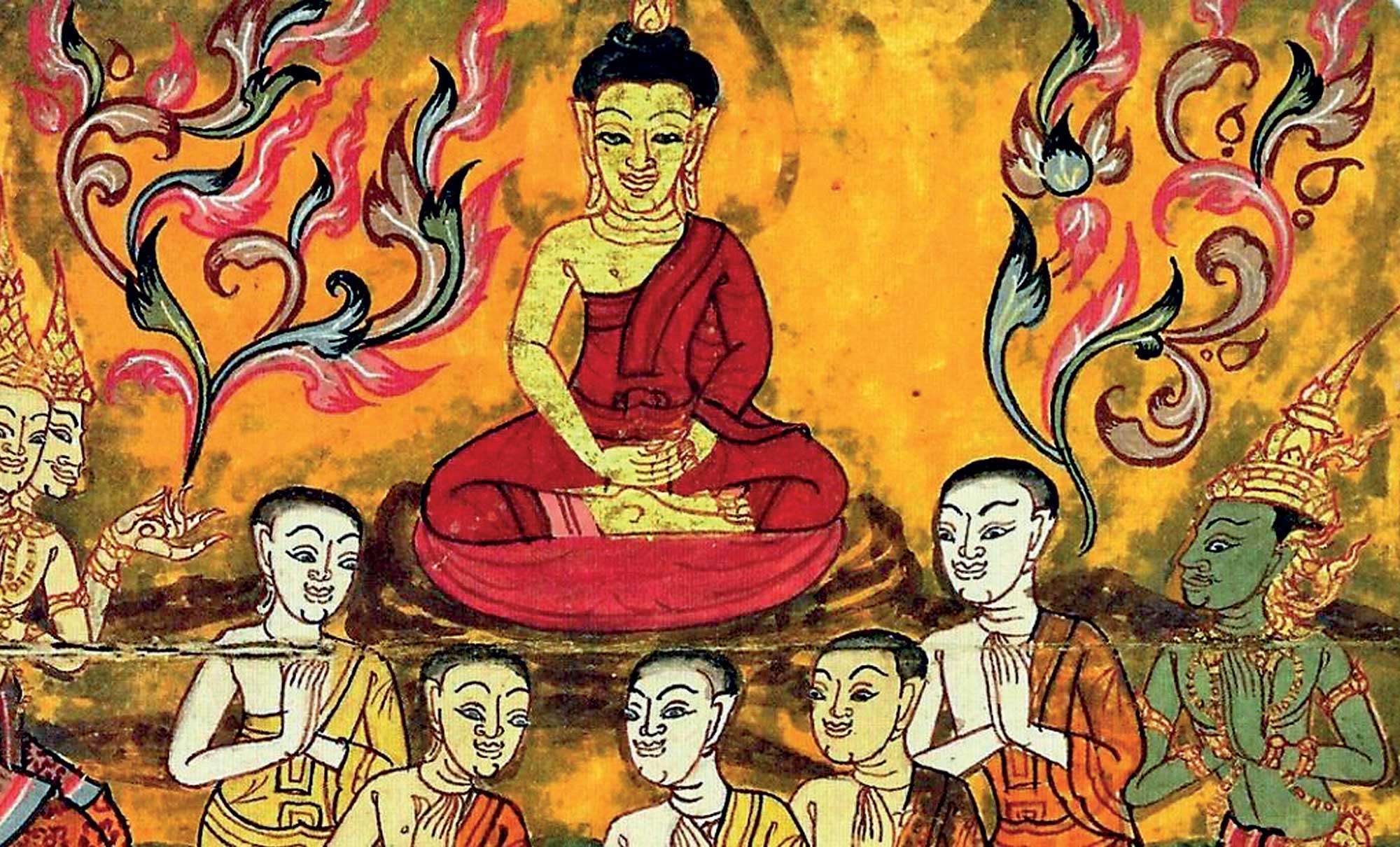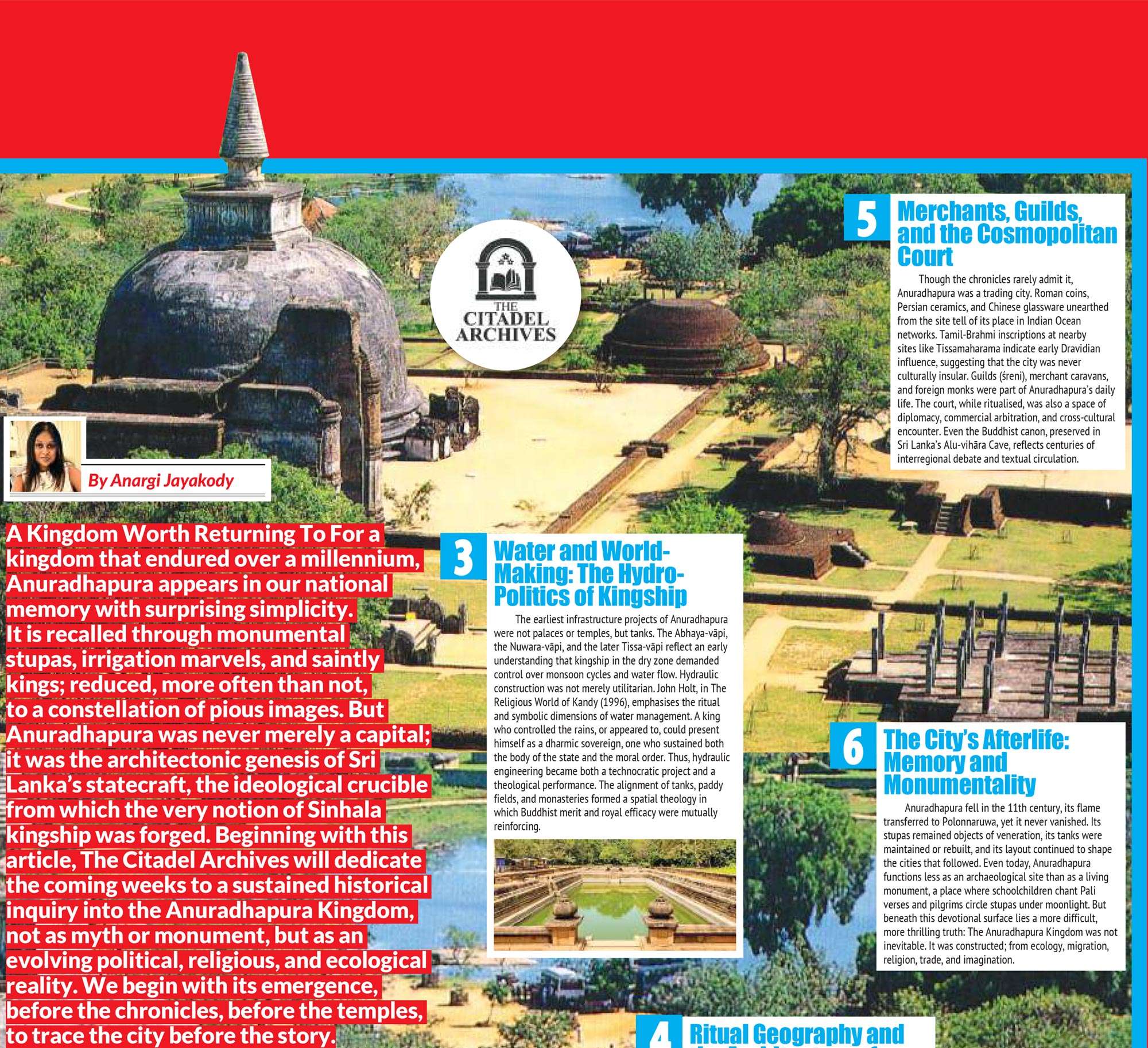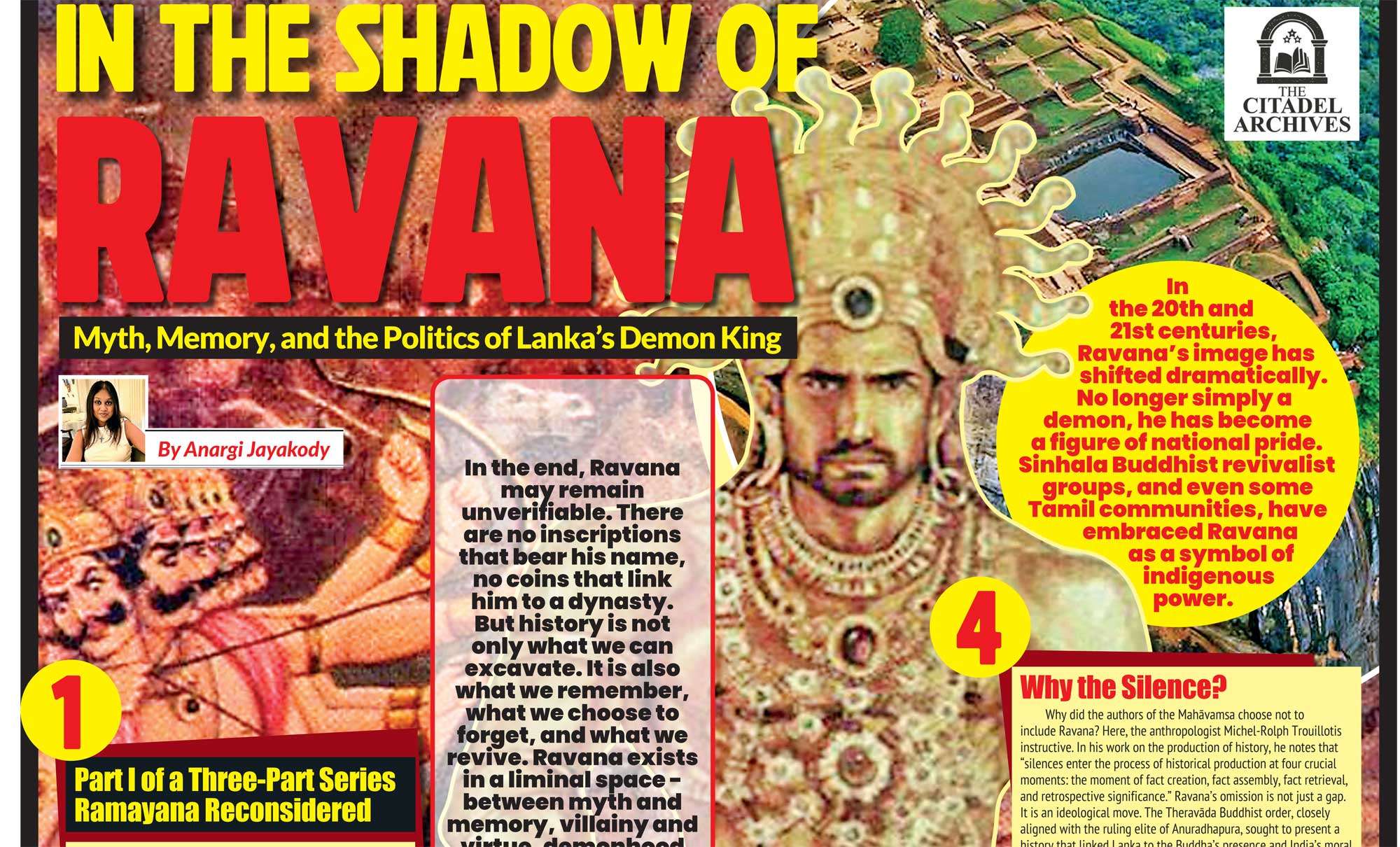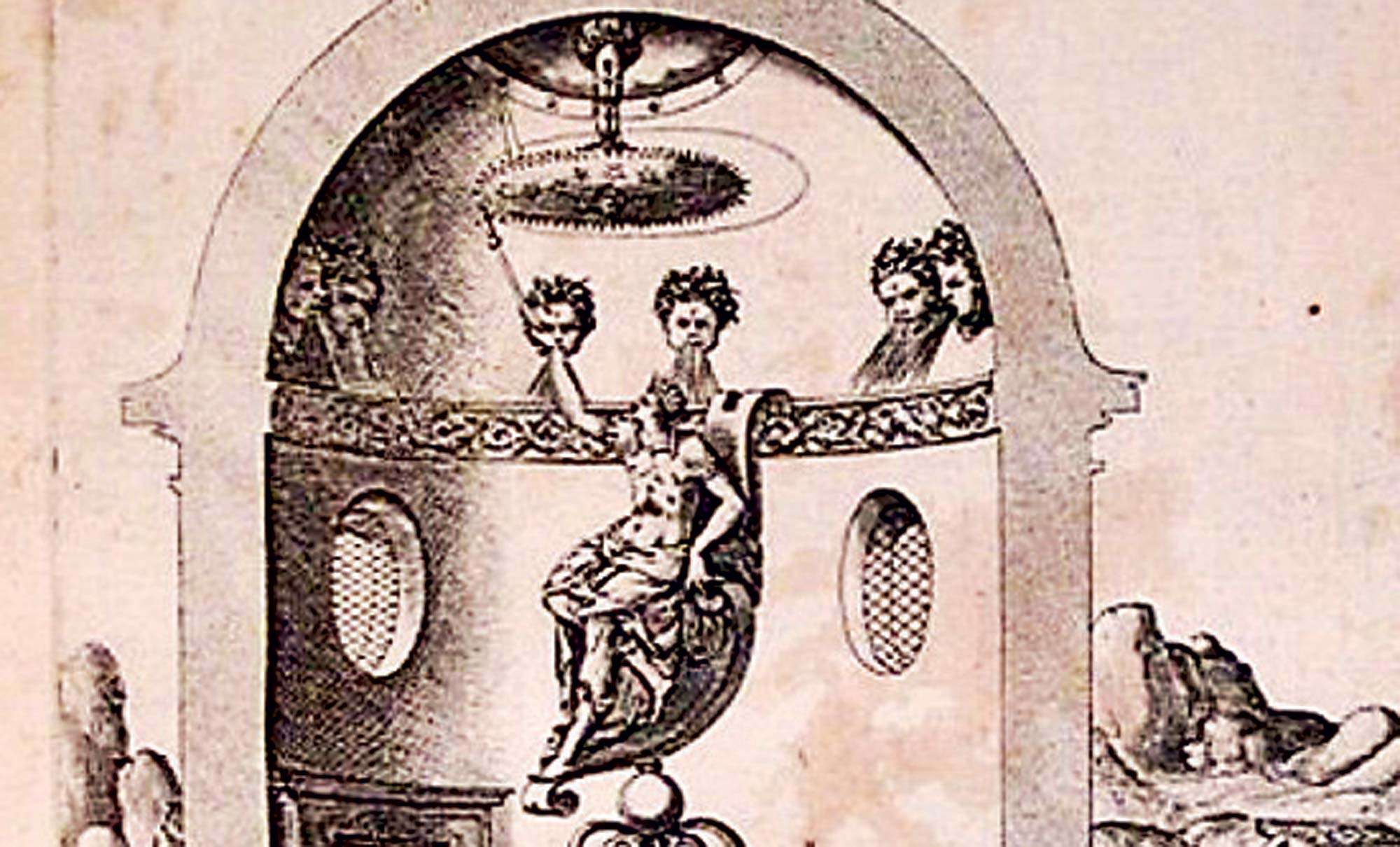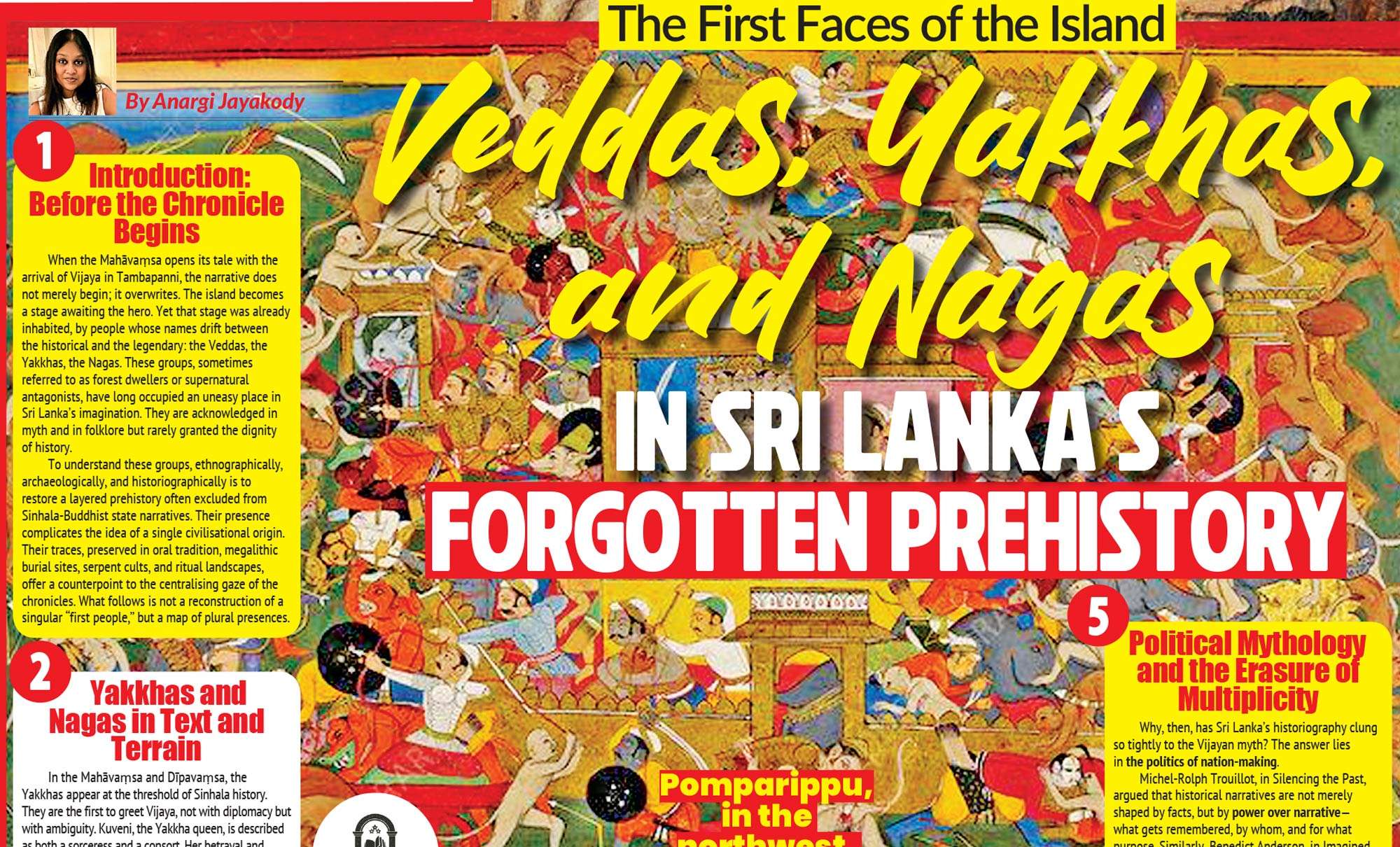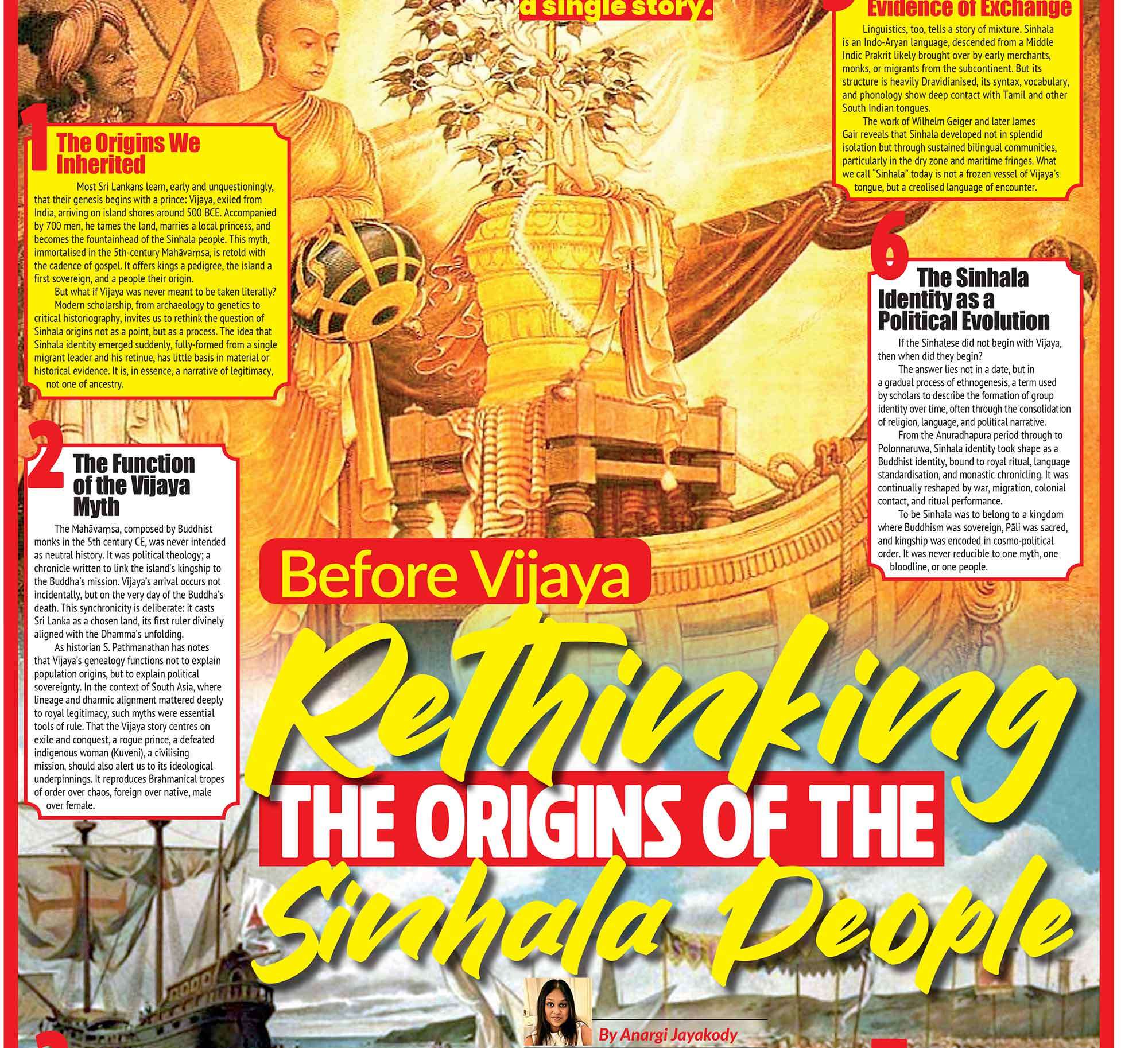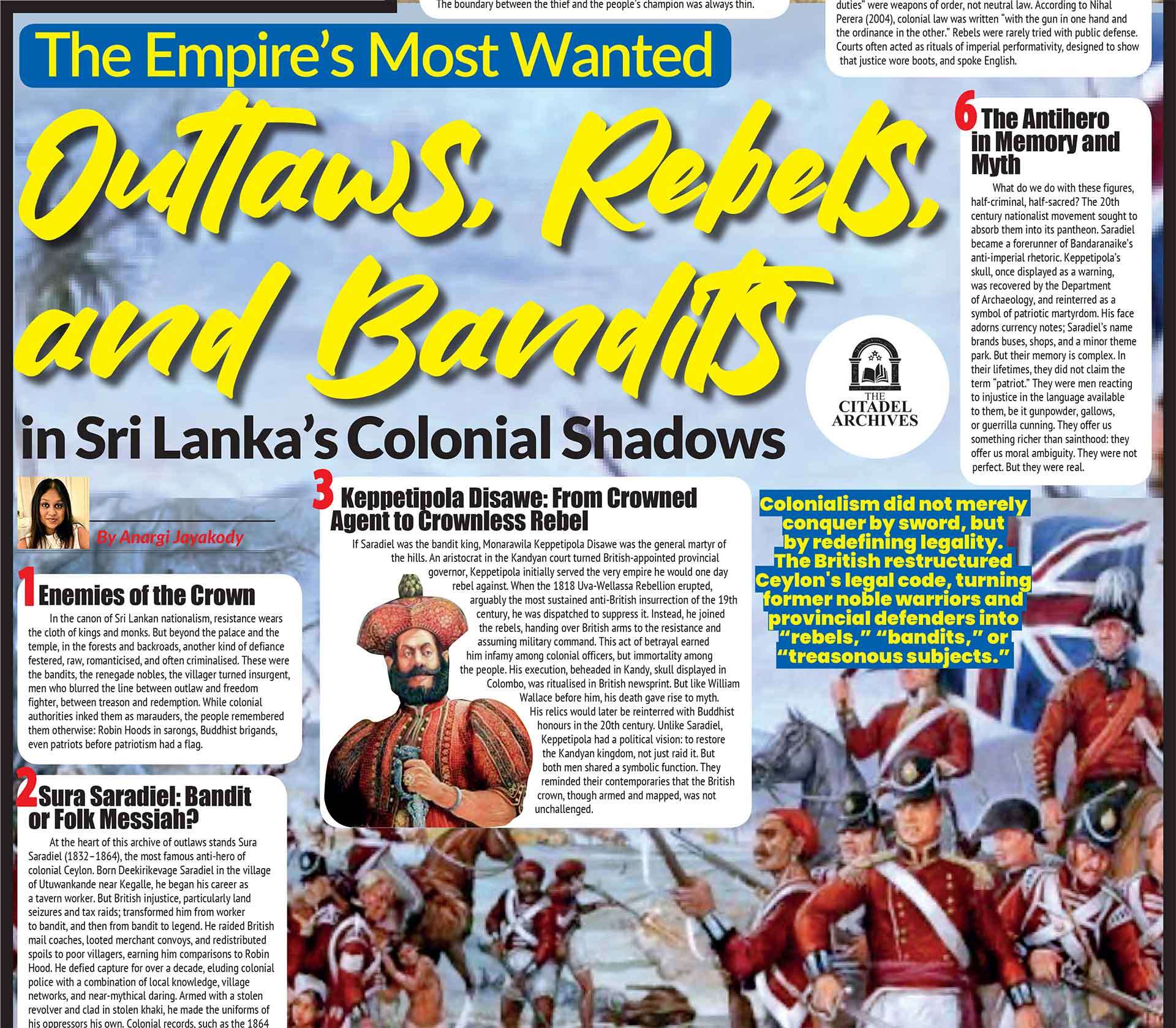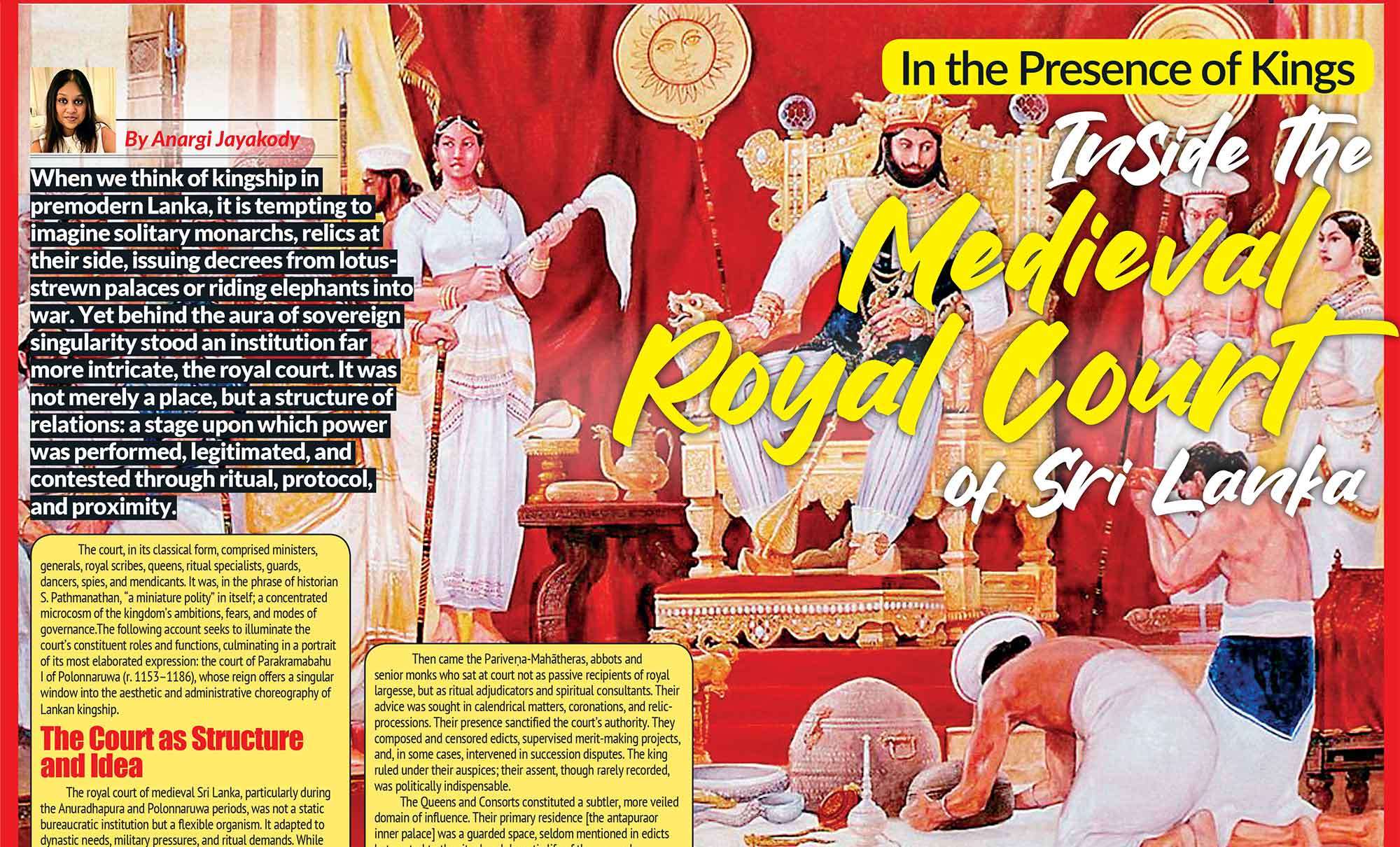The Tooth and the Throne: How a Sacred Relic Ruled Sri Lanka
In medieval Sri Lanka, kings were not made merely by birth, conquest, or coronation. They were made by a small fragment of calcified bone. The Tooth Relic of the Buddha, housed today in Kandy but once carried across the island in war and ceremony, was the ultimate symbol of sovereignty. To possess it was to be king. To lose it was to fall from grace, power, and legitimacy. No kingdom in Asia linked divine relic and royal authority as tightly as S
Lovers, Traitors, and the Fall of Polonnaruwa: Scandal and Succession in a Medieval Kingdom
Polonnaruwa dazzled in its prime. Its reservoirs glittered like inland seas, its Buddhas stood serene in stone, and its kings styled themselves as both protectors of Buddhism and masters of conquest. Yet within a century of Parākramabāhu I’s death in 1186, the city had fallen into ruin. The jungle crept over palaces, irrigation tanks silted, and the kingdom fractured into rival courts. The decline was not the work of foreign enemies alone. Behind
When the Buddha Went to War: Polonnaruwa’s Holy Wars
Polonnaruwa dazzles modern visitors with the serene faces of the Gal Vihāra Buddhas. Carved from a single granite outcrop, these statues embody tranquillity:
THE KINGDOM OF TANKS HOW POLONNARUWA ENGINEERED WATER INTO POWER
When the millennium-old city of Anurādhapura collapsed in the face of Chola invasion and chronic neglect, the Sinhala polity shifted its capital eastward. To Polonnaruwa, a site once regarded as a frontier
When Sri Lanka Spoke to Rome and China: Anuradhapura’s Lost World Diplomacy
Forget the image of Anuradhapura as an isolated city of monks. In its prime, it was a hub in a global network, sending embassies to Roman emperors, exchanging gifts with Chinese dynasties, and entertaining envoys from India. The chronicles hint at a city that was not only sacred, but cosmopolitan: a node where relics, spices, and politics crossed oceans. To understand Anuradhapura is to see it not as a provincial capital, but as a player on the w
The Stone Bureaucracy Anuradhapura’s Epigraphic Order Land, Law, and Language in Anuradhapura
If Anuradhapura was a kingdom of stone, then its truest record is not its towering stupas but its carved inscriptions, hundreds of them, scattered across monastic caves, ruined vats, boundary stones, and ancient reservoirs. These short texts, often overlooked by popular memory, are the archival bedrock of the Sinhala polity. Long before the Mahāvamsa curated memory into myth, these epigraphs chronicled a living kingdom: naming donors, taxing land
The City Before the Chronicle Anuradhapura and the Origins of the Sinhala Polity
A Kingdom Worth Returning To For a kingdom that endured over a millennium, Anuradhapura appears in our national memory with surprising simplicity.
Part III of the Ramayana in Lanka Series
This article concludes our three-part exploration of the Ramayana’s Lankan dimensions. We began with Ravana, remembered in the Indian tradition as the demon-king, but in Sri Lanka increasingly reframed as a sovereign whose absence in the Mahāvaṃsa betrays deliberate silencing. We then turned to Sita, whose sojourn in Lanka has been variously imagined as captivity, endurance, estrangement, and even refuge, depending on the community retelling her
A Series in Three Voices
This article forms the second part of our three-part exploration of the Ramayana’s Lankan dimensions. Last week we examined Ravana, whose image oscillates between historical conjecture and epic villainy. This week, we turn to Sita, whose sojourn in Lanka is among the most contested episodes in the entire tradition. Unlike Ravana, whose role was flamboyant and martial, Sita emerges as a paradox: powerless in circumstance, yet central to the epic’s
In the Shadow of Ravana
In the end, Ravana may remain unverifiable. There are no inscriptions that bear his name, no coins that link him to a dynasty. But history is not only what we can excavate. It is also what we remember, what we choose to forget, and what we revive. Ravana exists in a liminal space - between myth and memory, villainy and virtue, demonhood and kingship.
Anuradhapura’s Water Clock Kingdom Clepsydras, Ceremony, and the Sacred Hour
In the ancient kingdom of Anuradhapura, time did not tick; it dripped. Before the advent of mechanical clocks or European chronometers, the governance of life, faith, and ritual in Sri Lanka was regulated by a subtler, older rhythm. That rhythm was water.
The First Faces of the Island: Veddas, Yakkhas, and Nagas in Sri Lanka’s Forgotten Prehistory
When the Mahāvaṃsa opens its tale with the arrival of Vijaya in Tambapanni, the narrative does not merely begin; it overwrites.
Before Vijaya Rethinking the Origins of the Sinhala People
Most Sri Lankans learn, early and unquestioningly, that their genesis begins with a prince: Vijaya, exiled from India, arriving on island shores around 500 BCE. Accompanied by 700 men, he tames the land, marries a local princess, and becomes the fountainhead of the Sinhala people. This myth, immortalised in the 5th-century Mahāvaṃsa, is retold with the cadence of gospel. It offers kings a pedigree, the island a first sovereign, and a people their
The Empire’s Most Wanted Outlaws, Rebels, and Bandits in Sri Lanka’s Colonial Shadows
In the canon of Sri Lankan nationalism, resistance wears the cloth of kings and monks. But beyond the palace and the temple, in the forests and backroads, another kind of defiance festered, raw, romanticised,
In the Presence of Kings Inside the Medieval Royal Court of Sri Lanka
When we think of kingship in premodern Lanka, it is tempting to imagine solitary monarchs, relics at their side, issuing decrees from lotus-strewn palaces or riding elephants into war. Yet behind the aura of


